The dark heart of dressage: What really goes on behind the stable doors?
It is dubbed ‘horse ballet’, the most delicate of Olympic sports. But, as Charlotte Dujardin is banned from competing for excessively whipping a horse, Zoe Beaty takes a closer look at the training methods and those calling for change

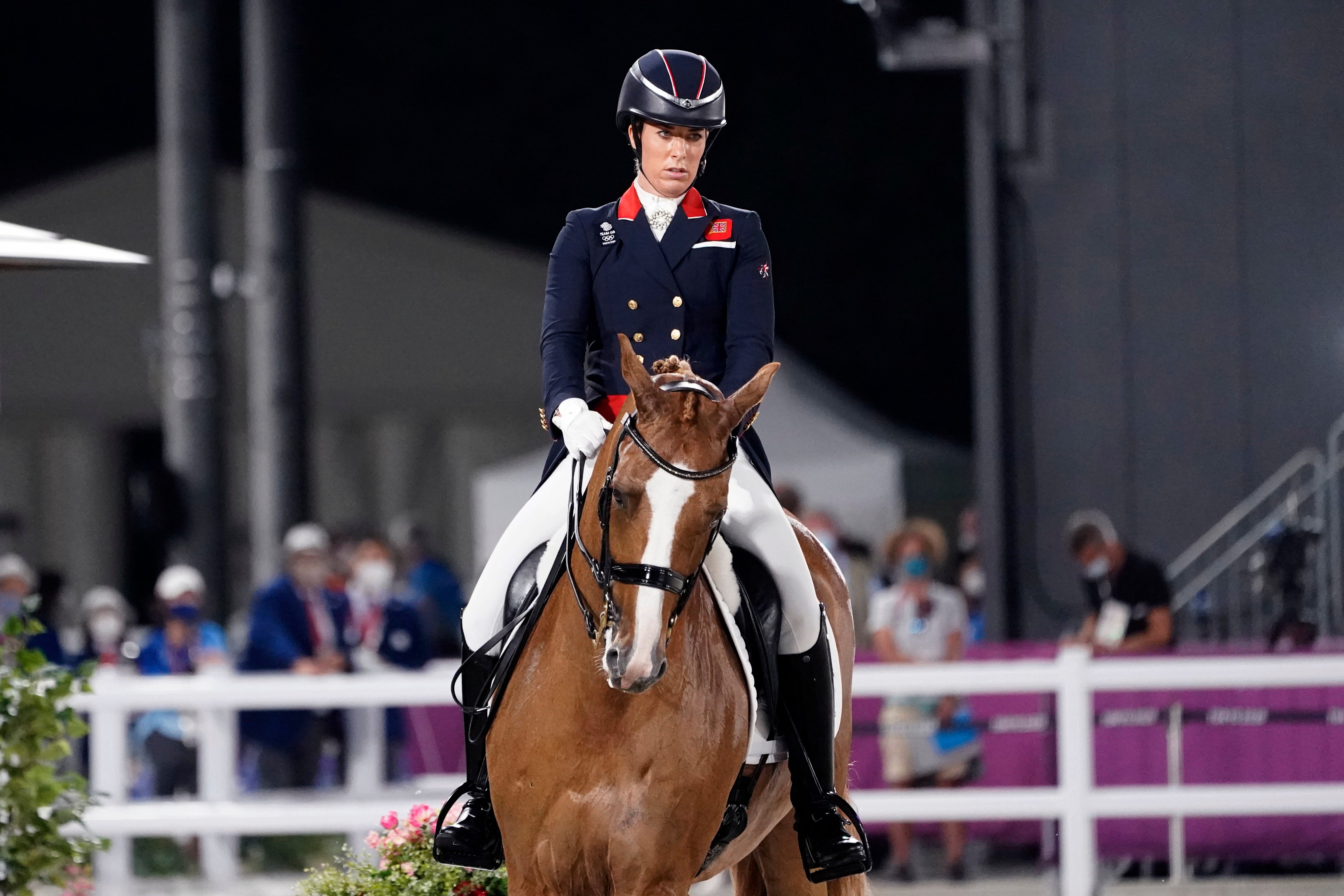
In February last year, Rebekka Klubien got a job as a groom at Helgstrand Dressage – a stables and training centre in Denmark – where elite horses are prepped for international competition and sold. It isn’t something she can ever forget. “I saw horses with wounds from spurs and skin swellings from harsh whippings,” Klubien tells me.
Klubien was working as an undercover journalist, in response to a tip that horses at the centre were being injured. Before going in, she’d spoken to multiple people who were worried, “so I expected to potentially witness mistreatment”, she explains.
“The reality was worse than I anticipated.”
This week, just three days before the Olympics were due to start, three-time gold medallist Charlotte Dujardin was ceremoniously banned from competing after a video surfaced of her abusing a horse. In the footage, Dujardin, the British darling of dressage, who was hoping to become Britain’s most decorated female athlete at Paris 2024, was seen “whipping the horse 24 times like a circus elephant”.
She was provisionally suspended for six months by the International Federation for Equestrian Sports (FEI), but Dujardin’s career will likely never recover. She called her actions in the video “an error of judgement during a coaching session” in a statement issued shortly after it was made public. Her boyfriend, Dean Wyatt Golding, appearing outside their home during the media storm that followed, said the allegations were “out of the blue”.
For Dujardin, they may well have been, but many agree that a reckoning for the sport of dressage couldn’t come soon enough.
Beneath its elegant exterior, the sport often described as an “equine ballet”, or ballet on horseback, has a dark underbelly. With its focus on precision, rather than strength or speed, dressage (which means “training” in French) is a discipline in which riders and their horses are scored on one thing only: control.
Their reward comes from executing impeccable posture and footwork. The horses are trained to perform movements such as “piaffing” – perhaps one of the most striking elements, where horses appear to jog on the spot – which is only attained by rigorous coaching.
Those within the dressage community talk about the importance of “trust and harmony” between a skilled rider and their horse, but in many cases, rider ambition and success come at a price. Highly lucrative, dressage is a sport in which the cost can be the welfare – or even the basic needs – of the animals the owners purport to love.
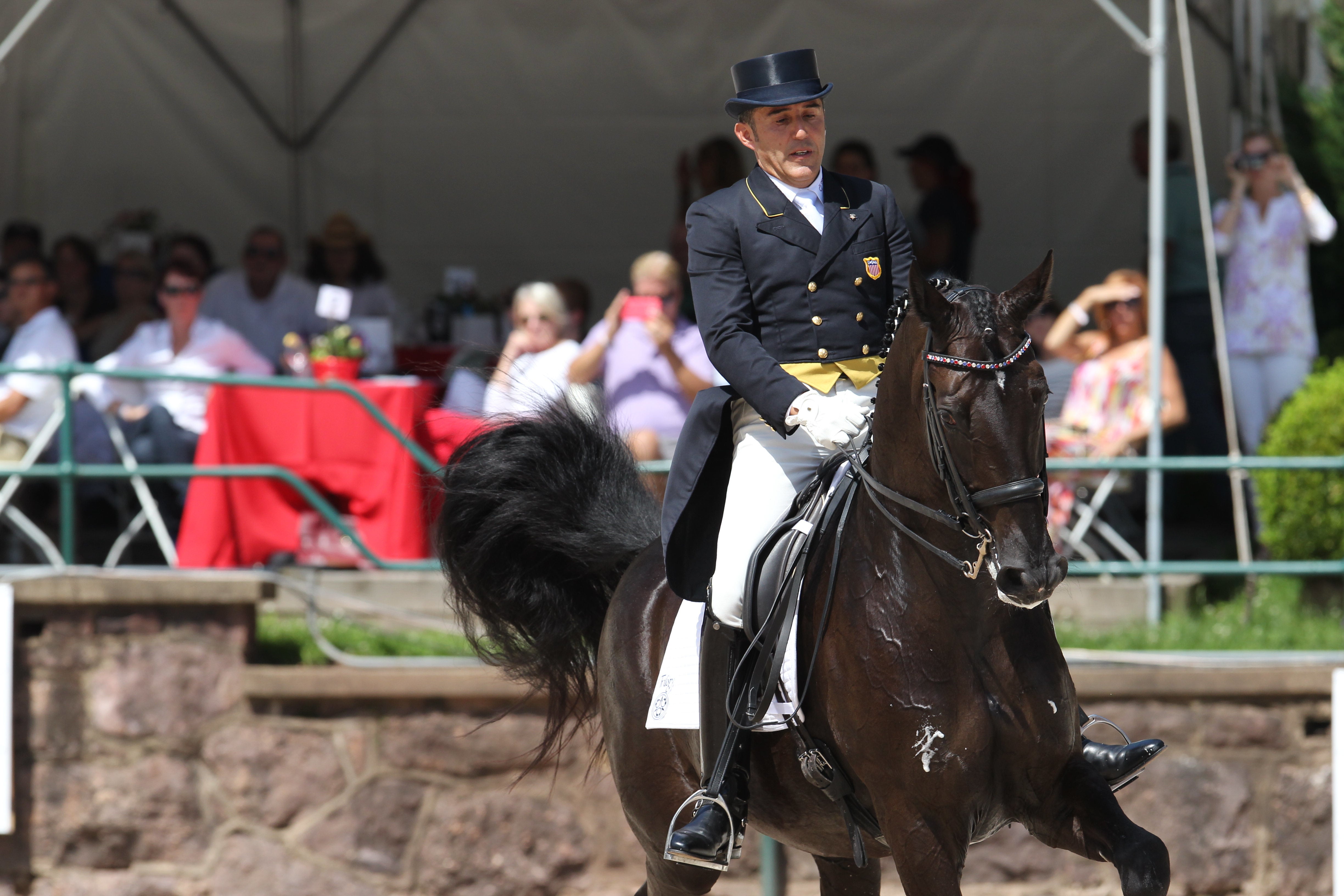
Over the years, riders have come under fire for controlling horses using fear, pain and deprivation; for overusing spurs, and denying horses water or food, all in the name of training. “Things like double bridling, where the horse has a double bit in their mouth – a curb and a snaffle, which puts immense pressure on a horse’s mouth – are used,” explains Dene Stansall, Animal Aid’s horse consultant.
“The thing is, if they open their mouths in a dressage session, you lose points. So the riders put a very tight noseband on the horse, which is a crank noseband that keeps the mouth tightly shut.
“There’s also a method called a ‘rollkur’” – an extreme hyperflexion of the horse’s neck, which caused huge controversy in the sport as far back as 2010 when it turned horses’ tongues blue – “where the head can come behind the vertical into the chest, causing extreme pain to the horse.
“That is actually illegal,” says Stansall, “but that’s not to say it’s not used in training sessions prior to the event.”
“When animals are used in competitive sports and entertainment, and particularly in events like the Olympics – where the stakes are really high, and large amounts of money are involved – the potential for abuse is obvious,” says Claire Bass, campaigns director at Humane Society International.
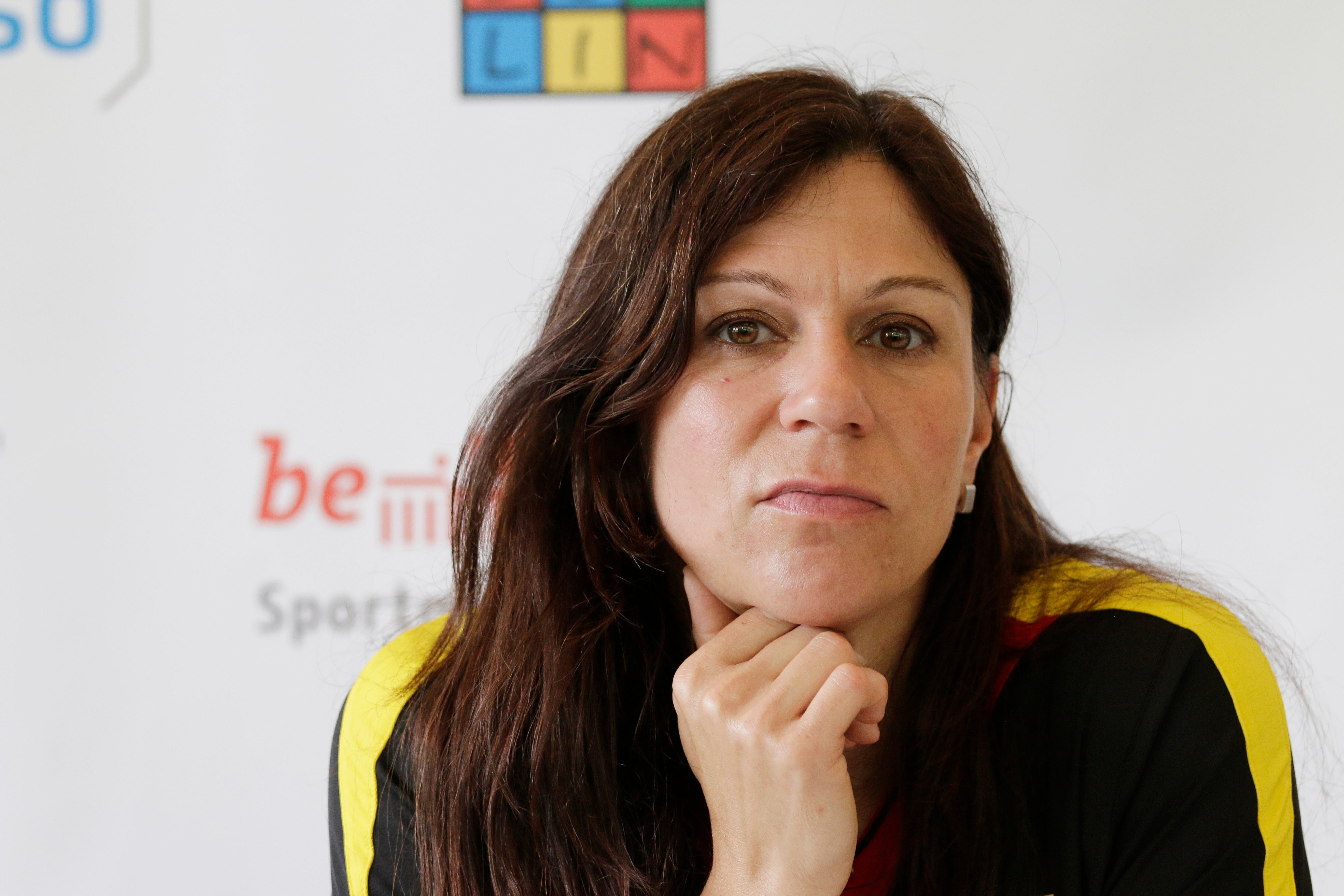
“It does seem like this kind of exposé is all too common in the industry, in dressage and the wider equestrian sector,” she adds.
Klubien believes the “brutal” practices are embedded in the fabric of the sport. The fact that horses are checked for traces of blood on the day of competition hints at what an open secret this is.
“There was a culture that perpetuated this harsh treatment,” the investigative journalist says. As shown in the documentary she filmed for Danish channel TV2, Operation X, she was alerted to whipping marks and injuries caused by “training” as soon as her second day in the job. She eventually managed to film trainers carrying out techniques to control the horses that caused them fear and pain.
She explains: “It was clear why the horses were getting injured. The mistreatment was systematic, and very few riders seemed to handle the horses respectfully and in line with good welfare practices.
“It was deeply distressing to witness the complete lack of regard for horses as individual beings.”
After the documentary aired last year, Helgstrand Dressage, who were contacted for comment by The Independent this week, issued a lengthy statement acknowledging that the footage Klubien confronted the centre’s owner with was “not OK”.
“This is bad riding and treatment of horses that we do not want to see at Helgstrand Dressage. It does not live up to our guidelines and values set, and it is not an expression of our culture. We have to fix that,” it read.
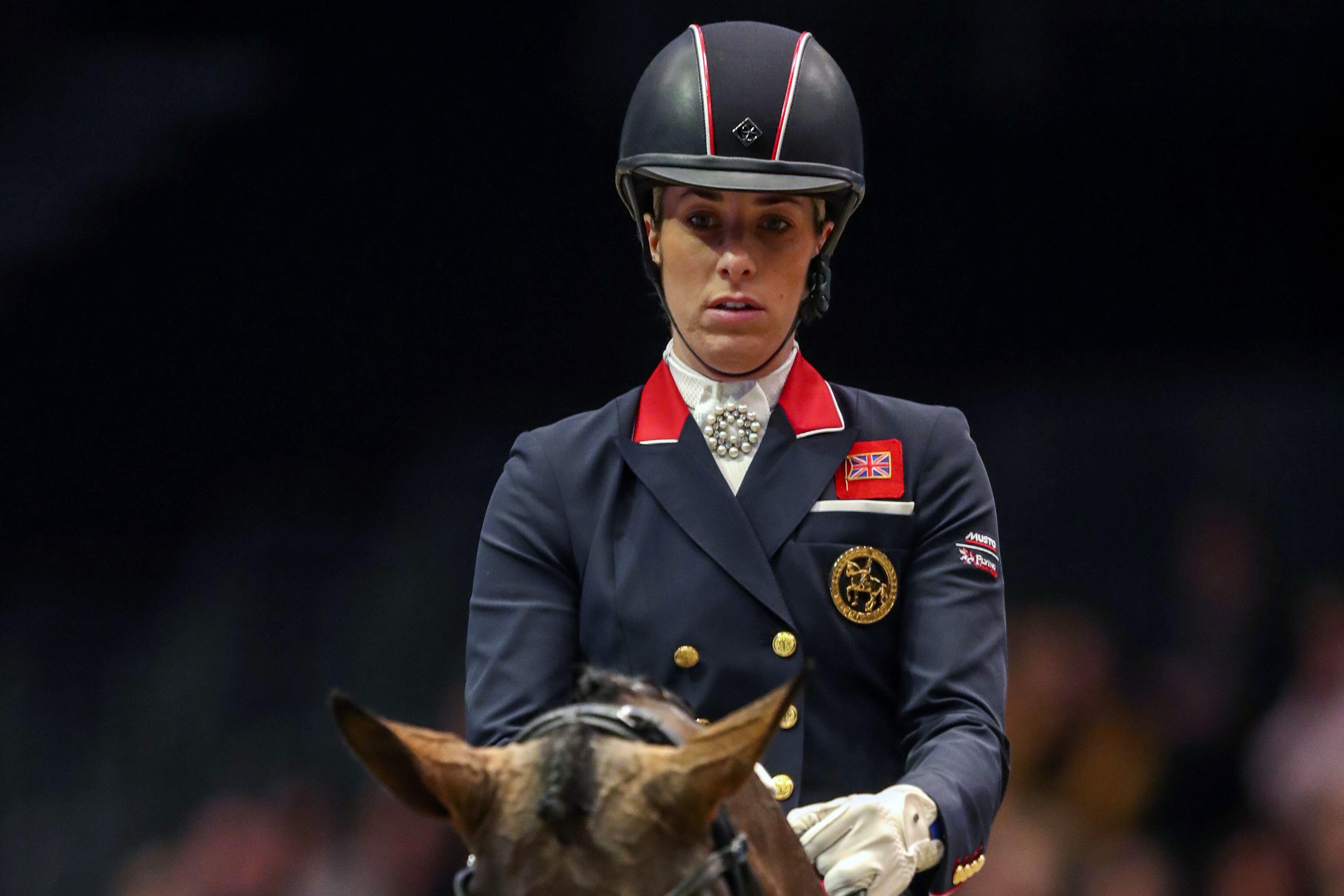
“We can see that there has been a shift in our value set, and it is our responsibility as management to ensure that our training and treatment of horses takes place in the best way. We can see in the programmes that this has not happened. We can and must do better.”
Helgstrand Dressage added that, both before and since the recordings were made, they had “thoroughly reviewed” the processes in place at the centre and “introduced a large number of measures and improvement points for our animal welfare, business conduct and conditions for our employees”.
However, the stables are not the first to come under fire, and Dujardin isn’t the first to be suspended under investigation for breaching animal welfare rules. In February this year, former Olympian dressage rider Cesar Parra was suspended while the FEI examined an “appalling and abhorrent training video” in which a horse is twice hit on the neck or head while being ridden.
In 2022, former Olympic medallist Mark Todd was also suspended by racing authorities after being seen hitting a horse with a branch; at the 2020 Olympics in Tokyo, German modern pentathlon trainer Kim Raisner was filmed punching a horse during the women’s event. After she was sent home, the pentathlon governing body said it would ban the equestrian element of the discipline from the 2028 Olympics onwards.
Those in the dressage community who participate in this difficult sport point out that training must be strict to achieve the excellence that’s demanded of horses and riders. They say that they not only treat their horses with absolute care, but adhere to welfare guidelines. They also make the point that the whip is a “legal enhancement aid for training horses”, and say that it’s “a few bad apples” who neglect their animals in order to win at any price because the stakes at elite level are so high.
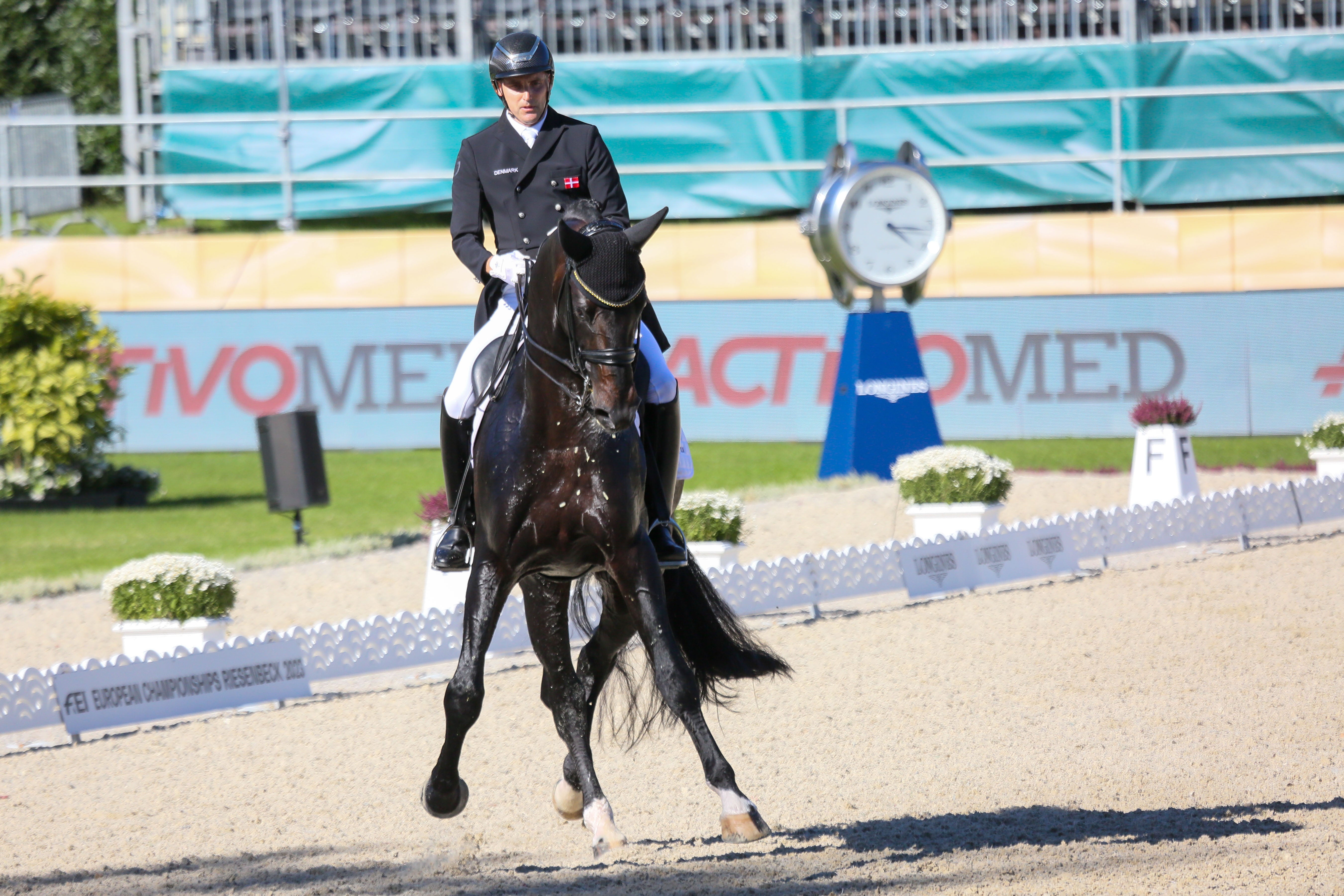
At the heart of it, of course, is money. Andreas Helgstrand, who owns the highly esteemed stables, is at the helm of a multimillion-pound empire, and fought against Operation X’s release. Dujardin has already lost plenty of sponsorship deals “worth millions”, says Stansall.
This time it was a whistleblower who exposed Dujardin, submitting footage taken two and a half years ago during a paid-for training session, via her lawyer, Stephen Wensing. She is now facing a Tonya Harding effect of sorts, as she is accused of trying to sabotage Dujardin’s shot at gold in Paris.
Wensing said that she made it public in an attempt to “save dressage”, which the official governing body of the sport, British Dressage, said they found “somewhat disingenuous, given that it was timed to cause maximum damage to our sport”.
In a statement issued on Thursday, they added that Dujardin’s actions in the video were “completely unacceptable” and that “it is going to be incumbent on all of us to prove why dressage and the welfare of the horse actually go hand in hand”. They said: “What will save dressage is how we all respond to this crisis by demonstrating our love and care for horses.”
Since Klubien’s documentary aired, “the response from the industry has been mixed”, she says. “Some have expressed shock and dismay, calling for immediate reforms and better oversight to ensure horse welfare.
“However, there has also been resistance along with attempts to downplay the findings.”
In the weeks after it became public knowledge that she was a journalist, months after leaving her “job” as a groom at Helgstrand Dressage, Klubien received numerous phone calls from unknown numbers. “I can't say for sure who contacted me in those months, but it’s not the first time I’ve heard of intimidating tactics being used in the industry to silence those who have witnessed or know something undesirable,” she says.
Will an investigation of Dujardin change dressage? Tighter regulations will be key if changes are to be made, says Bass. But ultimately, she and others want to see dressage consigned to the history books.
Klubien says that the culture of dressage behind the stable doors was hiding in plain sight. “I believe many knew deep down that what was happening was wrong,” she says. Let’s hope the time has come when they can no longer turn a blind eye.




Join our commenting forum
Join thought-provoking conversations, follow other Independent readers and see their replies
Comments